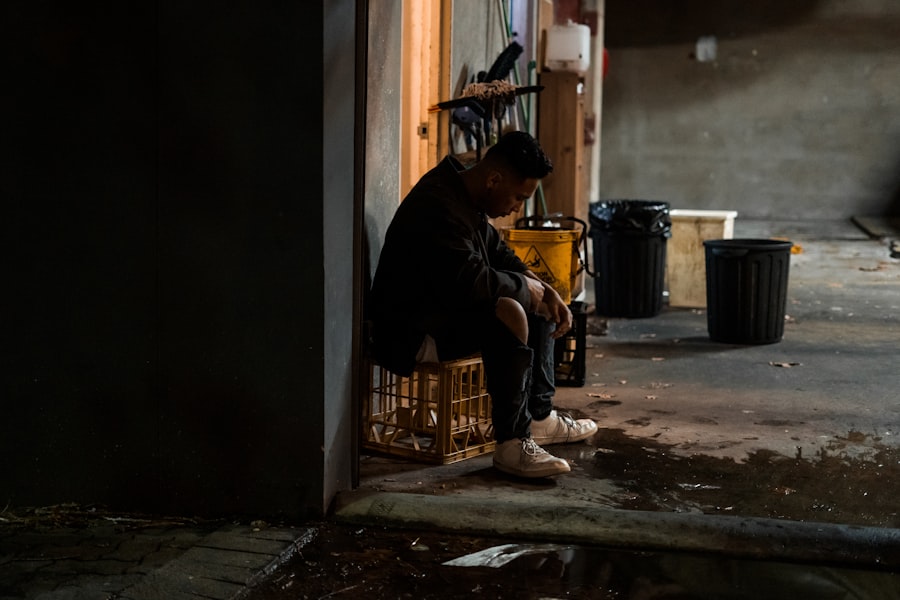As you navigate your daily life, you may have noticed that the cost of living in the United States has become a pressing concern for many individuals and families.
This phenomenon has left many feeling financially strained, struggling to make ends meet, and questioning their economic stability.
The crisis is not just a statistic; it is a reality that affects your ability to afford housing, healthcare, and even basic necessities. The cost of living crisis is multifaceted, influenced by a variety of economic factors that intertwine to create a complex web of challenges. As you delve deeper into this issue, you will discover that it is not merely a result of inflation or rising prices; it is also shaped by systemic issues such as wage stagnation, housing shortages, and healthcare costs.
Understanding these contributing factors is essential for grasping the full scope of the crisis and its implications for your financial well-being.
Key Takeaways
- The cost of living crisis in the USA is a growing concern for many Americans, as the rising costs of essential goods and services outpace wage growth.
- Factors contributing to the cost of living crisis include inflation, housing affordability, healthcare costs, and regional disparities in the cost of living.
- Housing affordability is a significant factor in the cost of living crisis, as high housing costs can consume a large portion of household income.
- Inflation has a direct impact on the cost of living, as it erodes the purchasing power of consumers and leads to higher prices for goods and services.
- Rising healthcare costs are a major contributor to the cost of living crisis, as they can place a significant financial burden on individuals and families.
Factors Contributing to the Cost of Living Crisis
Several key factors contribute to the escalating cost of living that you experience daily. One significant element is inflation, which refers to the general increase in prices over time. As you go grocery shopping or fill up your gas tank, you may notice that the prices of everyday items have surged.
This inflationary pressure can be attributed to various causes, including supply chain disruptions, increased demand for goods, and rising production costs. These factors create a ripple effect that ultimately impacts your purchasing power. Another critical factor is wage stagnation.
While you may be working hard and putting in long hours, your paycheck may not reflect the rising costs around you. Many workers have seen their wages remain relatively flat over the years, failing to keep pace with inflation. This disconnect between income and expenses can lead to financial strain, forcing you to make difficult choices about where to allocate your limited resources.
The combination of rising prices and stagnant wages creates a perfect storm that exacerbates the cost of living crisis.
Housing Affordability and the Cost of Living

Housing affordability is one of the most pressing issues within the broader cost of living crisis. As you search for a place to call home, you may find that rental prices and homeownership costs have skyrocketed in many areas across the country. The demand for housing often outstrips supply, leading to bidding wars and inflated prices that can leave you feeling priced out of the market.
This situation is particularly challenging for first-time homebuyers and low-income families who struggle to find affordable options. Moreover, the impact of housing costs extends beyond just rent or mortgage payments. You may also face additional expenses related to utilities, property taxes, and maintenance fees, all of which contribute to your overall cost of living.
As housing becomes increasingly unaffordable, many individuals are forced to make sacrifices in other areas of their lives, such as cutting back on discretionary spending or delaying important life milestones like starting a family or pursuing higher education.
Impact of Inflation on the Cost of Living
| Factors | Impact |
|---|---|
| Housing | Rising inflation can lead to higher mortgage rates and increased rental costs. |
| Food | Inflation can result in higher prices for groceries and dining out. |
| Transportation | Increased inflation can lead to higher fuel prices and transportation costs. |
| Healthcare | Inflation can result in higher medical expenses and insurance premiums. |
| Education | Rising inflation can lead to higher tuition fees and education-related expenses. |
Inflation plays a pivotal role in shaping your experience of the cost of living crisis. When inflation rises, it erodes your purchasing power, meaning that each dollar you earn buys less than it did before. You may have noticed this firsthand as you visit grocery stores or restaurants; what used to be an affordable meal or shopping trip now feels like a financial burden.
The Consumer Price Index (CPI) is often used as a measure of inflation, reflecting changes in the prices of a basket of goods and services that you typically purchase. The impact of inflation is not uniform; it affects different sectors of the economy in varying degrees. For instance, while food and energy prices may fluctuate significantly, other costs like housing may remain stubbornly high.
This unevenness can create additional stress as you try to budget for your monthly expenses. As inflation continues to rise, it becomes increasingly important for you to stay informed about economic trends and adjust your financial strategies accordingly.
Rising Healthcare Costs and the Cost of Living
Healthcare costs represent another significant component of the cost of living crisis that directly affects your financial situation. As you seek medical care or health insurance coverage, you may find that premiums, deductibles, and out-of-pocket expenses have risen dramatically in recent years. This trend can be particularly burdensome for families who are already grappling with other financial pressures.
The high cost of healthcare can lead to difficult decisions about whether to seek necessary medical treatment or forgo care altogether due to affordability concerns. Additionally, rising healthcare costs can have long-term implications for your financial stability. If you are faced with unexpected medical expenses, it can quickly derail your budget and force you to dip into savings or accumulate debt.
The interplay between healthcare costs and overall living expenses underscores the importance of having a comprehensive understanding of your financial landscape. As healthcare continues to evolve, staying informed about available options and resources can help you navigate this challenging aspect of the cost of living crisis.
The Role of Wages in the Cost of Living Crisis

Wages are a critical factor in determining your overall quality of life and ability to cope with rising costs. As you work hard to earn a living, it can be disheartening to see that wage growth has not kept pace with inflation or the increasing cost of essential goods and services. Many workers find themselves in a situation where they are putting in more hours but still struggling to make ends meet due to stagnant wages.
The disparity between wage growth and living costs can lead to feelings of frustration and hopelessness. You may feel as though your hard work is not being rewarded adequately, making it difficult to achieve financial goals such as saving for retirement or purchasing a home. Addressing this issue requires a collective effort from employers, policymakers, and communities to ensure that wages reflect the realities of today’s economy and provide workers with a fair chance at financial stability.
Regional Disparities in the Cost of Living
As you consider the cost of living crisis, it’s essential to recognize that it does not affect everyone equally; regional disparities play a significant role in shaping your experience. Depending on where you live in the United States, you may encounter vastly different costs for housing, transportation, and everyday expenses. For instance, urban areas often have higher living costs compared to rural regions, which can create challenges for those seeking employment opportunities in cities while trying to maintain affordable living conditions.
These regional differences can also impact your quality of life and access to resources. In some areas, high housing costs may force individuals into longer commutes or substandard living conditions, while others may benefit from lower costs but face limited job opportunities or access to quality education and healthcare services. Understanding these disparities is crucial for developing effective strategies to address the cost of living crisis on both individual and community levels.
Strategies for Coping with the Cost of Living Crisis
In light of the ongoing cost of living crisis, it is essential for you to explore practical strategies for coping with rising expenses. One effective approach is creating a detailed budget that outlines your income and expenses. By tracking where your money goes each month, you can identify areas where you might cut back on discretionary spending or find ways to save on essentials like groceries or utilities.
Additionally, consider exploring alternative sources of income or side hustles that align with your skills and interests. Whether it’s freelancing, part-time work, or starting a small business, diversifying your income streams can provide some financial relief amid rising costs. Furthermore, staying informed about local resources such as food banks or community assistance programs can help alleviate some financial burdens during challenging times.
Government Policies and the Cost of Living Crisis
Government policies play a crucial role in shaping the economic landscape that influences your experience with the cost of living crisis.
For instance, policies that promote affordable housing development or increase funding for public transportation can help ease some financial pressures associated with high living costs.
Moreover, social safety net programs such as unemployment benefits or food assistance can provide vital support during times of economic hardship. Advocacy for policies that prioritize workers’ rights and fair wages is also essential in addressing wage stagnation and ensuring that individuals like yourself can achieve financial stability. Engaging with local representatives and participating in community discussions can empower you to advocate for changes that will positively impact your economic situation.
The Future Outlook for the Cost of Living in the USA
As you look ahead, it is essential to consider what the future holds for the cost of living crisis in the United States. While there are signs that inflation may stabilize over time, other factors such as ongoing supply chain issues and geopolitical tensions could continue to influence prices in unpredictable ways. Additionally, shifts in labor markets and technological advancements may reshape job opportunities and wage dynamics.
The future will likely require adaptability on your part as economic conditions evolve. Staying informed about trends in housing markets, healthcare costs, and wage growth will be crucial for making sound financial decisions moving forward. By remaining proactive and engaged with community resources and support systems, you can better navigate whatever challenges lie ahead.
Addressing the Cost of Living Crisis
In conclusion, addressing the cost of living crisis requires a multifaceted approach that considers various economic factors impacting your daily life. From rising housing costs and healthcare expenses to stagnant wages and regional disparities, each element plays a role in shaping your experience as an individual navigating this complex landscape. By understanding these challenges and exploring practical strategies for coping with rising expenses, you can take proactive steps toward achieving greater financial stability.
Moreover, advocating for policies that prioritize affordable housing, fair wages, and accessible healthcare will be essential in creating a more equitable economic environment for all individuals. As you engage with your community and stay informed about local resources and initiatives, you contribute to a collective effort aimed at addressing this pressing issue head-on. Together, we can work toward solutions that alleviate the burden of rising costs and foster a more sustainable future for everyone.
The ongoing cost of living crisis in the USA has left many families struggling to make ends meet, prompting discussions about financial management and wealth growth. For those looking to navigate these challenging times, an insightful resource can be found in the article on wealth management strategies at
